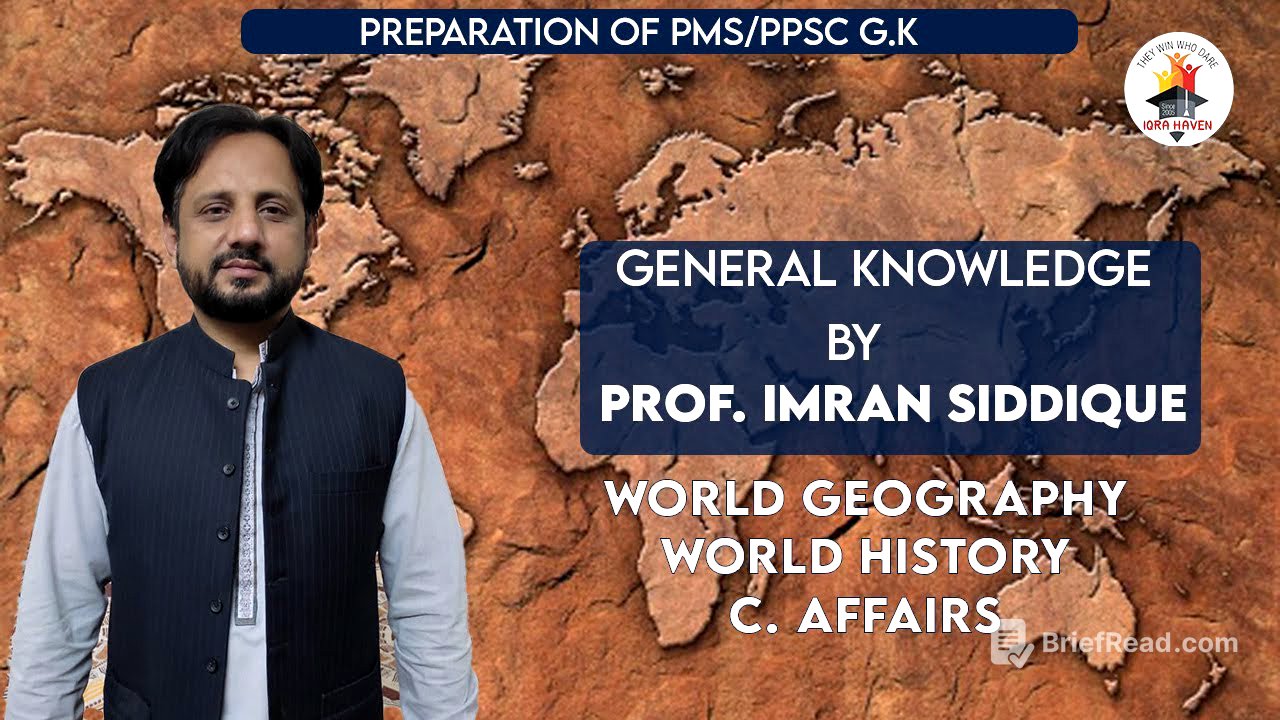TLDR;
This video discusses the geographical significance of the Indian Ocean and the strategic importance of locations surrounded by water, such as peninsulas and islands. It also touches on China's infrastructure projects and their potential impact on maritime routes.
- The Indian Ocean is the third largest ocean and is surrounded by water on three sides, forming the Indian Peninsula.
- Peninsulas are surrounded by water on three sides, while islands are surrounded by water on four sides.
- China is developing infrastructure projects like CPEC, which could affect maritime strategies and trade routes.
Indian Ocean and Peninsulas [0:41]
The Indian Ocean is identified as the third largest ocean in the world. The discussion highlights that the Indian Peninsula is surrounded by water on three sides. This geographical feature defines it as a peninsula, emphasizing the presence of water on three sides and land on one side.
Peninsulas vs. Islands [2:24]
The video differentiates between peninsulas and islands based on the number of sides surrounded by water. Peninsulas are surrounded by water on three sides, whereas islands are surrounded by water on all four sides.
China's Infrastructure and Strategic Implications [10:59]
The conversation shifts to China's infrastructure projects, particularly mentioning the China-Pakistan Economic Corridor (CPEC). It suggests that these projects could pose strategic challenges. China is constructing infrastructure similar to CPEC to mitigate potential vulnerabilities.
Suez Canal Opening [18:12]
The video mentions the year 1869, alluding to the opening of the Suez Canal.








